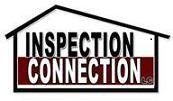The green way to dispose
Food waste best sent down the drain
As someone who checks kitchen garbage disposal function on a weekly basis, I get a kick from the TV commercial showing a do-it-yourselfer with his hand deep in the mouth of the beast as the wife strolls by and starts flicking switches. We don’t get to see what happens next, but it does not appear that the handyman is very confident in his safety measures. In addition to chewing on wayward fingers, our kitchen food waste disposer can also be one of the “green” team members in your household appliance lineup. A wide range of studies from disposal manufacturers, independent laboratories and the U.S. Environmental Protection Agency suggest home food waste is best disposed via municipal wastewater systems rather than through the landfill. The U.S. generates more than 34 million tons of food waste each year. The question of what to do with it is a challenge for communities everywhere. The most ecological and economical method for managing food waste is composting at home. This reduces waste transportation costs, makes room at the landfill and boosts production in your garden or landscape. This is easy to implement in most homes, but many busy households may not have the time or the yard area to make it work. Homeowners with municipal wastewater service can do the next best thing to yard composting – sending food waste down the drain. Landfills are not only unsightly, they present many environmental issues: While transporting food waste, garbage trucks burn expensive fuel and emit diesel fumes. In landfills, food scraps decompose quickly and produce methane – a gas 20 times more capable of trapping heat in the atmosphere than CO2. Rotting food waste contributes to leachate, an acidic liquid residue that can seep into and contaminate groundwater. New landfills are expensive to build and as new sites are driven further from city centers to rural areas, costs to maintain and deliver to them are going up. Food is not the largest component of waste at most landfills, but the EPA estimates food waste is nearly 13 percent of the total. Food waste is composed mostly of water (70 percent). Grinding it up in a disposer and sending it down the drain is a practical and environmentally responsible way of contributing to a comprehensive waste management strategy. In addition to keeping food scraps out of landfills, a capable wastewater treatment facility can capture methane, the biogas created while treating wastewater and use it to generate renewable energy to power the plant, itself. Many modern facilities already do this, and the number is growing. The bio-solids that result from the wastewater treatment process can be converted and used as fertilizer and soil conditioner, recycling food nutrients back to the soil. Our own Las Cruces wastewater facilities have implemented a successful composting process – converting sewage sludge to high-quality beneficial Class “A” compost. This compost product is available free to the public and area farmers. Call 528-3597 for more information. If your home is served by a private septic tank (like mine), you can still use a kitchen drain disposal – just use it sparingly. The more food waste put down the sink in this type of system, the more frequently you will have the septic tank professionally serviced. The U.S. Green Building Council LEED for Homes program and the ANSI/ICC National Green Building Standard each recognize the sustainability value of kitchen disposals. Points are allocated within each program for homes targeting LEED or Build Green New Mexico green certification. Food waste disposers use less than 1 percent of a household’s total water consumption (less than a gallon per person on average) and typically cost less than 50 cents a year in electricity to operate (3-4 kilowatt-hour annually). Better quality disposers are usually constructed primarily of metal, so they can also be recycled at the end of their useful life.
Miles Dyson is the owner of Inspection Connection LC - Professional Home Energy Rating and Home Inspection Services. For more information visit: https://www.InspectionConnectionTexas.com.
Article originally published in the Las Cruces Bulletin on Friday, June 14, 2013
